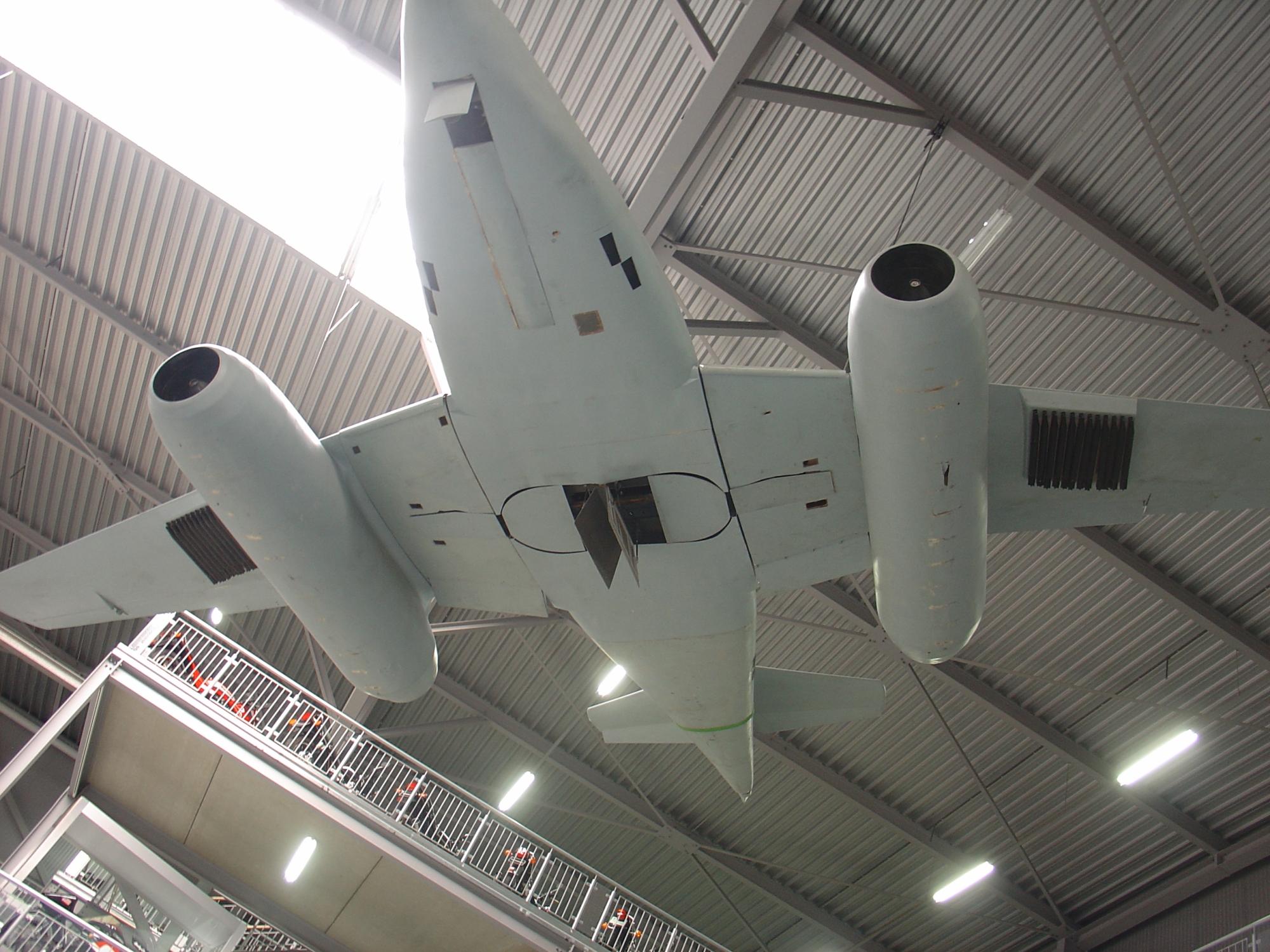
Me 262 with R4M underwing rockets on display at the Technikmuseum Speyer, Germany
The 5.5cm R4M aircraft rocket; drawn from a British
report on its discovery. This is the air-to-air version with a shaped-charge
warhead for antiaircraft use.
The R4M had two shaped-charge warheads: PR-3 for
aerial fighting and the larger PB-2, used for attacking tanks.
The R4M rocket – from the German Rakete (rocket),
4-KiIogramm, Minenkopf (mine-head) – was nicknamed the Orkan (Hurricane)
missile. It weighed 8.51b (3.85kg), measured 32in (812mm) in length and 2.16in
(55mm) in diameter. It was developed in 1945 and a few were fitted to Me-262
and Fw-190s aircraft. It was highly effective and in April 1945 a squadron of
Me-262 jets are reported to have brought down 30 American B-17 bombers in a
single mission.
The fighter version of the Me262 could fly at 540 mph – it
could far outstrip the Mustangs, and it could reach 30 000 ft in seven minutes.
It could fly for only an hour, which was a drawback, but its 30-mm guns could
pack an awful punch. Later it added the new R4M rockets to its armament, being
able to carry 24 of these high-velocity air- to-air rockets which were
ripple-fired to form a dense pattern. Fired at a B17 formation, a single rocket
was usually more than enough to cause lethal damage.
The tactic used by Me262 pilots when attacking US bombers
was generally to place themselves about three miles behind the bomber `box’ and
about 6000 ft above. From this position they began a dive to reach a speed of
over 540 mph with which to penetrate any fighter screen. Continuing down to
1000 to 1500 ft below the `box’ the German pilot would then pull up, throttle
back in order to lose some of this forward speed, then level out some 1000
yards behind the target at about 100 mph, firing rockets (if carried) at 650
yards’, then following up with his 30-mm from closer range. The pilot would
accelerate away and over to avoid flying debris, as his target bomber
disintegrated.
Produced by the Rheinmetall Company, the Rakete 4 Minenkopf
(R4M) air-to-air rocket, nicknamed Orkan (Hurricane), was developed to deal
with Allied heavy bombers. The projectile was composed of a simple steel (later
cardboard) tube with eight flip-out fins for stabilization. It was 82 cm (32.2
in) in length and 5.5 cm (2.16 in) in diameter. It was powered by a diglycol,
solid-fuel, fast-burning rocket propellant. It mounted a 0.50 kg (1.1l b) war-
head, either high-explosive for anti-aircraft use or armor-piercing against
tanks. It was usually used in a battery of twelve or twenty-four, mounted and fired
from a wooden launch rail attached under wing. The projectiles were unguided
and aimed by a cockpit gunsight. They were provided with enough fuel to be fired
effectively from 1,000 m, thus beyond the range of bombers’ defensive weapons.
The rockets were serially fired in four salvos of six missiles each, at
intervals of 0.07 seconds, from a range of about 600 m to 1,000 m and at a
speed of 1,700 ft/s. One single hit often meant a kill, but it was not an easy
task to take accurate aim on a target which was taking evasive action. Simple
and easy to manufacture, the R4M was used operationally only for a brief period
just before the end of World War II.